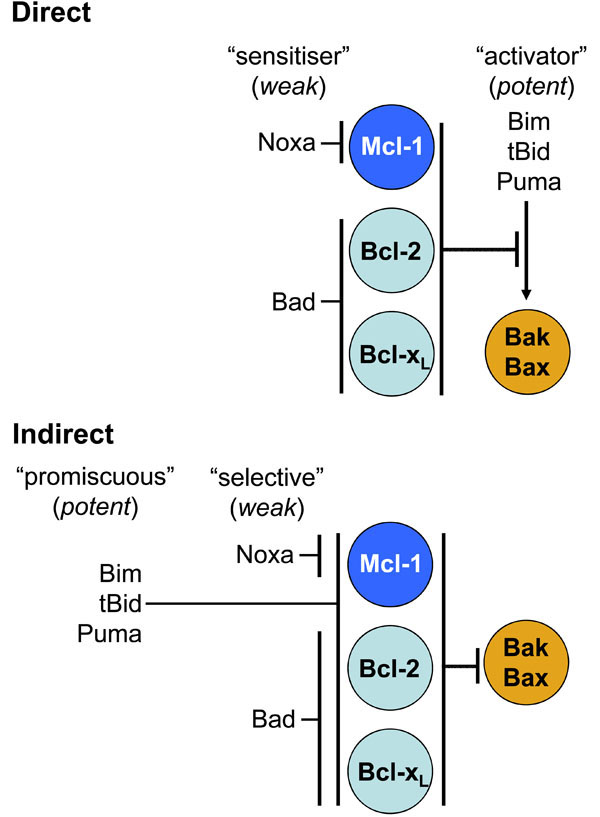Fig. (3) Curbing Bak/Bax pro-apoptotic function. The “direct”
model proposes that the pro-survival proteins (Mcl-1, Bcl-2 and
Bcl-xL shown) sequester “activator” BH3-only proteins (Bim, tBid
and Puma) thereby preventing them from activating Bak and Bax.
In response to cytotoxic stress, activator BH3-only proteins are
displaced from the pro-survival proteins by the “sensitiser” BH3-
only proteins (e.g. Noxa and Bad). Bim, tBid and Puma are potent
inducers of cell death due to their ability to bind and activate
Bak/Bax. The “indirect” model proposes that the pro-survival
proteins protect a cell by binding and sequestering Bak and Bax
rather than BH3-only proteins. During cell death the BH3-only
proteins bind either promiscuously (Bim, tBid and Puma) or
selectively (e.g. Noxa and Bad) to pro-survival proteins.
Occupation of the pro-survival proteins is sufficient to liberate
active Bak/Bax to kill the cell. In this scenario, Bim, tBid and Puma
are potent inducers of cell death due to their ability to bind and
inhibit all pro-survival proteins whereas the selective binders are
relatively weak killers unless expressed in combination.


